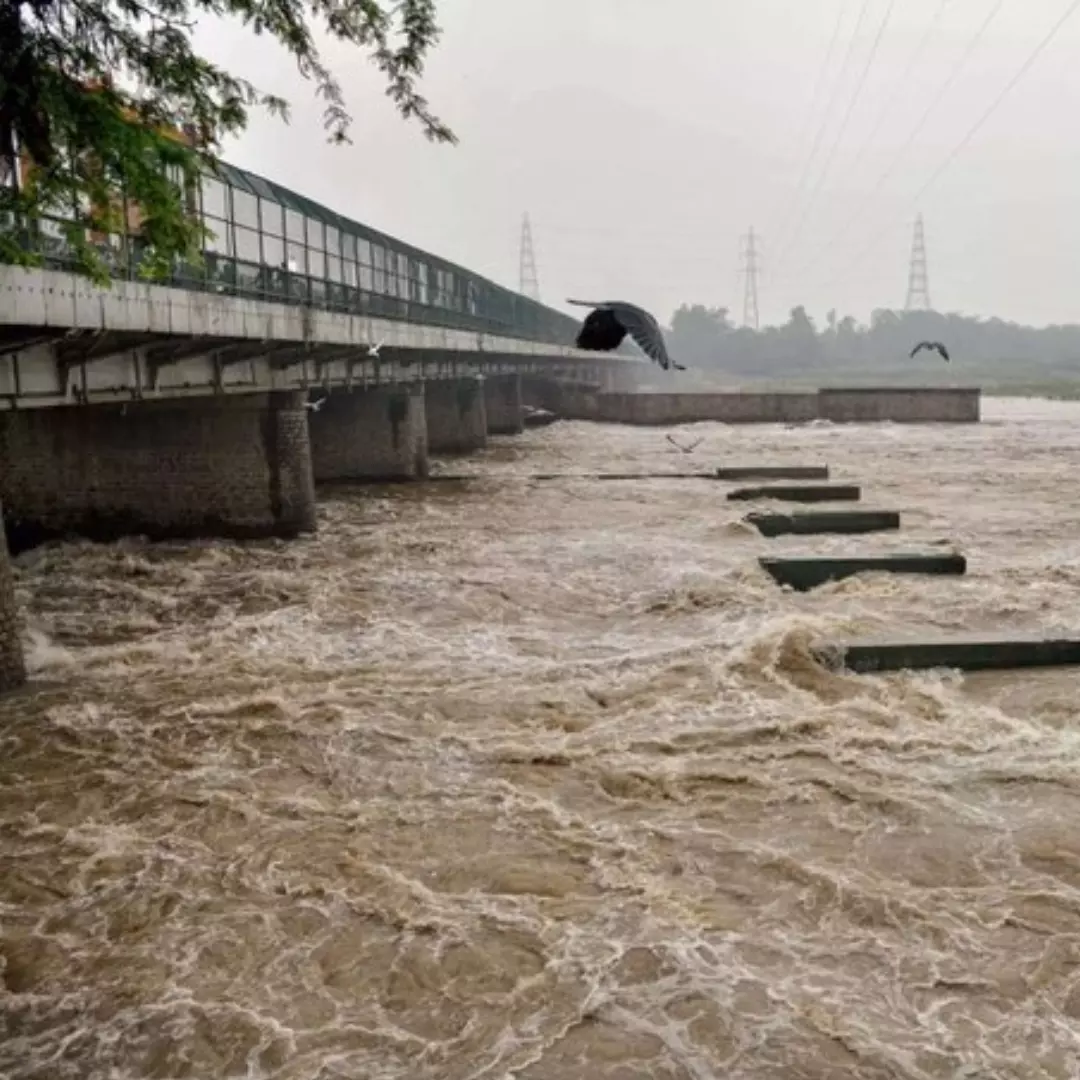
Image Credits: Twitter (Representative)
India
Yamuna River Reaches Tajmahal Walls, Orange Alert Issued In Mumbai As Rains Continue
 |
|The India Meteorological Department (IMD) issued an ‘orange’ alert for parts of Mumbai and its suburbs for Wednesday stating that the areas were likely to receive moderate to heavy rainfall with a possibility of heavy to very heavy rainfall in some areas.
The India Meteorological Department (IMD) has issued weather alerts for Mumbai and its suburbs due to expected heavy rainfall. An 'orange' alert has been issued, indicating a likelihood of moderate to heavy rainfall, with a possibility of heavy to very heavy rainfall in certain areas.
The IMD predicts moderate rainfall in parts of Sindhudurg, Nandurbar, Dhule, Jalgaon, Sambhajinagar, Ahmednagar, Pune, Nasik, Solapur, and Beed districts over the next 3-4 hours. Additionally, Thane, Raigad, Ratnagiri, and Palghar districts are likely to experience moderate to intense rainfall during the same period. A 'red' alert has been issued for Raigad and Palghar districts, indicating the possibility of heavy to extremely heavy rainfall in several parts on Wednesday.
Due to the heavy rainfall, Raigad District Collector Yogesh Mhase declared a holiday and ordered the closure of schools and colleges in the district. An 'orange' alert signifies rainfall ranging from 115.6 mm to 204.4 mm within a day, while a 'red' alert is issued for expected rainfall over 204.5 mm within a day. A 'yellow' alert was also issued for Aurangabad, Kolhapur, Nasik, Nandurbar, Jalgaon, Sindhudurg, and Dhule districts of Maharashtra, reported Hindustan Times.
The weather conditions have already affected suburban train services of the Central Railway, with an express train engine reporting failure, resulting in delays of 20-25 minutes for local trains in the city.
The forecast for the upcoming week indicates maximum temperatures settling between 28-29°C and minimum temperatures remaining around 24°C in Mumbai. The skies are expected to be cloudy and overcast, with limited to no sunlight. The weather conditions are attributed to a low-pressure area developing in the Bay of Bengal, which will strengthen the offshore monsoon trough near Maharashtra, leading to a monsoon revival in Mumbai and adjacent parts of the Konkan around July 18.
Yamuna River Reaches Taj Mahal
The recent heavy rains and the resulting surge in the water level of the Yamuna River have had serious consequences for Agra's iconic Taj Mahal and surrounding areas. According to a report, the rising Yamuna river waters touched the walls of the Taj Mahal on Monday, submerging a garden located behind the monument. This sight has not been seen for 45 years, with the last such incident occurring during the floods of 1978.
The water level in the Yamuna River surpassed the 'low-flood level' at 495 feet and reached the 'low-flood level' of 497.9 feet. While the situation has raised concerns about the safety of other historical monuments like Rambagh, Mehtab Bagh, Zohra Bagh, Kala Gumbad, and Chini ka Rauza, the Archaeological Survey of India (ASI) reassured that these sites have not suffered any damage so far. However, the adjacent Dussehra Ghat and Itimad-ud-Daula's tomb experienced flooding.
The ASI officials attributed the Taj Mahal's resilience to its ingenious design, stating that the main mausoleum was constructed to withstand flooding. Prince Vajpayee, a conservation assistant at ASI, explained that the monument was meticulously planned to prevent water from entering the main structure, even during high floods. In the 1978 flooding incident, the water level rose to 508 feet, surpassing the high-flood level in Agra, and managed to enter 22 rooms in the monument's basement, leaving behind silt. Since then, ASI has taken measures to prevent such occurrences, such as removing the wooden doors through which water had entered and constructing walls at the entrances from Basai and Dussehra ghats, as per a report in Economic Times.
Rescue Operations By NDRF
In response to the floods, rescue operations were launched by teams from NDRF (National Disaster Response Force), police, and local administration, evacuating over 500 people from 50 villages and 20 urban areas near the Yamuna, ensuring their safety in safer locations. Mathura district also experienced a rise in the Yamuna's water level, reaching 167.28 meters, above the danger mark of 166 meters. The floods caused extensive damage to agricultural lands, submerging over 500 bighas of land in Agra and Mathura districts. Approximately 100 villages and urban localities were left without power for two days, and residents in flood-affected areas of Mathura faced shortages of ration and drinking water
While the historic Taj Mahal has proven resilient against the rising river, the situation in the region remains critical, and efforts are ongoing to aid affected communities and mitigate further damage.
Heavy rain lashed several parts of Delhi on Saturday, causing waterlogging and traffic congestion in the city, parts of which had already been reeling from flooding over the past few days.
On Sunday morning, the water level of the Yamuna was at 205.98 metres, above the danger level of 205.33. According to the Central Water Commission, the water level is predicted to reach 205.75 metres by 10pm today.
Also Read: "Deliberate & Malicious Intent To Tarnish Reputation": Gautam Adani On Hindenburg Report